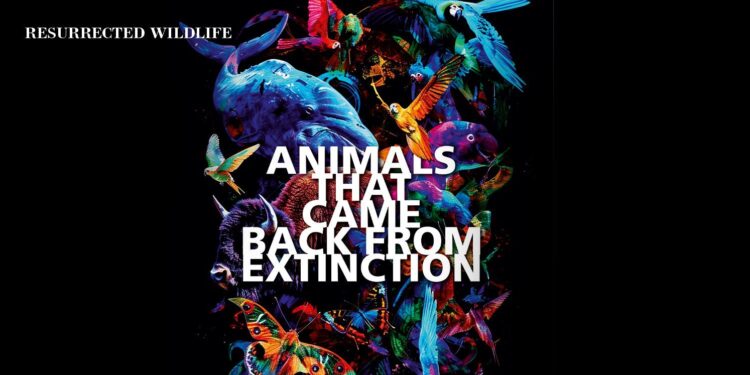- American Bison
The northern American plains were home to approximately 60 million bison that were important to the indigenous tribes. By the end of the 19th century, these numbers tumbled down to nearly 600 as bison were hunted for their meat and hides, for fun and also as a method of oppressing the tribes. The late 1800s saw small groups of ranchers starting to breed their own bison herds and then release them into the wild. Today, roughly 500,000 bison freely roam these grasslands, and they are safeguarded by several acts and laws, including the National Bison Legacy Act of 2016, signed by President Obama.
- Blue Whale
Near the end of 20th century, as demands for whale meat and oil grew, the Blue Whale population severely crashed down to a mere 0.2% of their total population. Only after 1966 did these creatures receive complete protection under the International Convention for the Regulation of Whaling, which increased the numbers to approximately 5000-15000 in 2018.
- Chequered Skipper Butterfly
The loss of open, damp woodlands and clearings saw this beautiful brown-orange coloured butterfly take its last flight in 1976 in England. The year 2016 brought a host of conservation organisations from the Back from the Brink project to restore this beauty.
- American Alligator
Also a victim of needless slaughter and hunting to fulfil human greed, these alligators almost faced extinction in the 1950s. Their numbers saw drastic falls, especially in the southeastern US. The American alligator was declared an endangered species back in 1973, and commercial farms started to breed them in captivity which made up for a remarkable recovery in their population.
- Echo Parakeet
Loss of food and habitat and the threat of feral cats made sustenance difficult for the Parakeet’s population. These numbers plummeted badly by the 1980s to about just 20 in number when the Mauritian Wildlife Foundation, aided by the Zoological Society of London, came up to save the species from extinction. Several conservation projects such as the creation of the Black River Gorges National Park in 1994 which gave home to over 700 parakeets.
- Southern White Rhinoceros
Surprisingly more common to the northern white rhinoceros, these creatures went into extinction at the beginning of the 20th century due to aggressive poaching and habitat loss. In 1895, researchers came across a tiny population of about 20 rhinos living on a South African nature reserve and since then great deal of effort and resources have been spent to revive their population. These efforts resulted in nearly 20000 southern white rhinos worldwide as of today, especially in South Africa.
- Panda
Pandas are iconic and well-known big bears who are loved all over the world for how adorable they are. These creatures came close to extinction due to extensive loss of habitat in the 20th century, combined with severe effects of poaching and infrequent reproduction. In 1970s only 1,000 of these creatures remained when intense scrutiny and conservation projects came up where in the Chinese government established rules and regulations against the hunting or trading of Pandas. Still considered as a Vulnerable species, these Pandas are now no longer endangered.
- Spix’s Macaw
One of the latest species that have been brought back from the brink of extinction, the Macaw was named after a German naturalist Johann Baptist Ritter von Spix, who first came across this blue coloured parrot in 1819. Once declared extinct, about 2 dozen Macaw were discovered in private collections around the world where captive-breeding programmes were initiated. The year 2022 saw eight of these birds being released into the wild, accompanied by eight wild Illiger’s macaws, who acted as trainers for the Spix’s macaws, as they possessed lesser survival skills due to their time in captivity.








